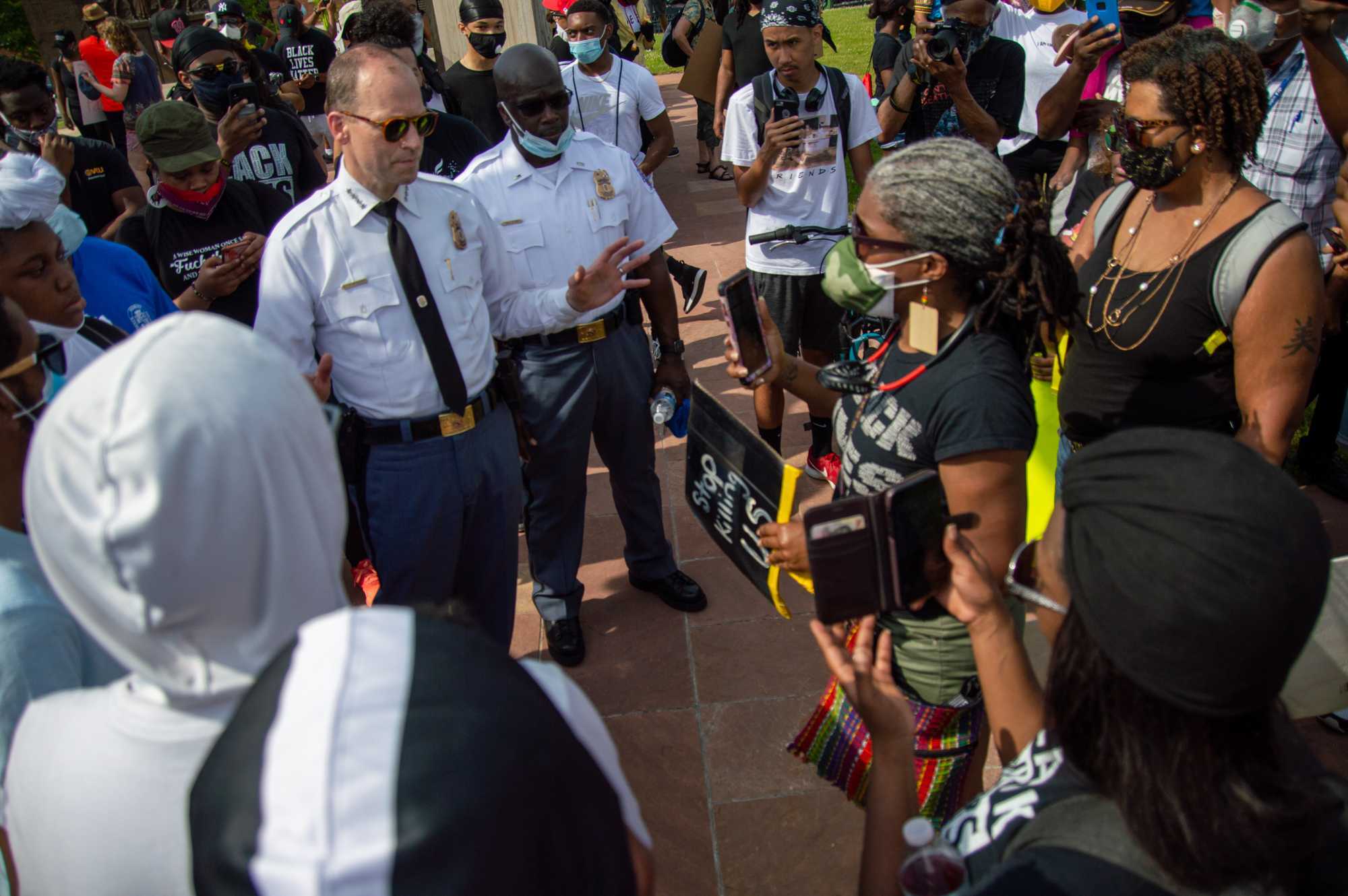Views expressed in opinion columns are the author’s own.
On Jan. 27, Prince George’s County police officer Michael Owen responded to a call about a driver hitting a parked car. At the scene, he found William Green asleep in his vehicle. Owen handcuffed Green, placed him in the passenger seat of his police car and proceeded to shoot him six times, killing him in yet another agonizing act of brutal police violence. He was not wearing a body camera. Owen was charged with second-degree murder and is currently being held without bond.
On Sunday, Green’s family came to a $20 million settlement with Prince George’s County. Retired judge and settlement mediator Steven Platt described the tragedy as “uniformly bad; more aggravating, in some instances, than … the more high profile cases that have gone on around the country.” But County Executive Angela Alsobrooks chose to double down on the county’s support for the police department. While she did express remorse for Green’s death, she went on to state that, “When we need to defend our department, we will, and when we need to make reforms, we will.”
Alsobrooks’ comments are particularly infuriating when you realize that the county has been “reforming” its police department for over a decade. In the 1990s, the department was placed under a consent decree that lasted until 2004. The results were mandatory mental health training, de-escalation techniques and a layered system of accountability — but it’s clear that those great reforms didn’t change shit, and the aforementioned Officer Owen is an eye-opening example of that.
Owen had been a member of PGPD for ten years, meaning it’s likely that he received all the training and de-escalation techniques required of any other cadet. And yet, the Washington Post reported that Owen used force against civilians at least nine times over ten years. He was videotaped twice last year grabbing people by their necks during arrests. He even sought workers’ compensation for psychological issues due to an incident earlier in his career.
These all seem like things a federally-instituted reform system would correct for, but they didn’t — and another Black person was killed for it. If this can occur well after reforms were implemented, how can the county truly transform policing while also “defending” the department? It seems that the reforms the county has had in place for years have done little to actually mitigate systemic issues.
The new wave of impending reforms has yet to inspire any hope. While an official task force on police reform is set to report back to the county on Oct. 30, the county’s Board of Education has twice pushed back a measure to remove police officers from public schools and replace them with counselors, social workers, psychologists and behavioral specialists. Why is it that Prince George’s County is unable to act urgently on an issue that would have direct, positive effects on Black and brown children, who make up the majority of its public school population?
Obviously, this issue isn’t relegated to Prince George’s County. Mayors and local executives across the country have responded to calls for police abolition and defunding with half-steps and hand-wringing. Instead of addressing the deep-rooted anti-Blackness present in policing, policies like sensitivity training and early warnings allow departments to easily check off boxes without actually giving up anything.
Cities such as Minneapolis went from seeking to “end policing as we know it” to more incremental change. Even Democratic presidential nominee Joe Biden has come out unequivocally against the notion of defunding the police. But how do we reform our system of policing while increasing their budgets, while they continue to weaponize their power to brutalize Black people? I hope at least this county has some answers by Oct. 30.
Malcolm Ferguson is a senior English and government and politics major. He can be reached at mferguso@terpmail.umd.edu.



